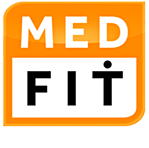Fitness Futures: Retail Locations for High-risk Population Management
Walgreens, Blue Cross Blue Shield of Kansas City and other major insurers such as WellPoint, Humana and United Healthcare have something in common that should pique the interest of the health and fitness industry. These companies have launched new retail locations to provide and sell products and services to attract more wellness consumers. Specifically, their goals are to capture more of the $5 billion market for primary care services.
For some insurers new retail locations in neighborhoods are offering urgent care, occupational medicine, physical therapy and other similar services. For others, new store formats to sell insurance products including fitness and wellness classes.
Walgreens, which operates more than 6,000 stores and 700 medical clinics, is extending its pharmacy and medical personnel into the growing field of high-risk population management. For LiveBlue of Kansas City Blue Cross, two new locations are selling insurance in a more consumer-friendly environment that uses the carrot of providing yoga classes and healthy living seminars. With different service and retail models, these businesses can provide new accessible locations for managing the most costly high-risk patients.
Other national retail clinics have jumped on this bandwagon by linking with major health systems to provide care to patients. Both the Henry Ford Health System and the Cleveland Clinic have relationships with CVS Pharmacy in-store clinics for basic primary care services. What if other national retailers decided to tap into this market as well?
Whole Foods would be a logical candidate, along with other big box retailers (Walmart) looking to repurpose space and attract traffic. How could these new retail medical locations expand and deliver fitness, nutrition and weight-management services as extensions of their brands? How might it impact the fitness industry?
I believe the fundamentals include:
1. Dedicated, visible space-An esthetic environment distinct from the dominant retail theme is a necessity. The space needs to include a multi-purpose classroom with resilient flooring, personal instruction area, meeting room and smaller spaces for counseling and testing with an exercise physiologist as the lead.
2. Exercise Software-Software and apps currently provide appraisals and exercise biometrics (e.g., mapmyfitness.com) for healthclubs and individuals. However, a system needs to be developed for graded exercise programs based upon an individual’s health history of chronic conditions, medications and capability. These guided exercise and nutrition programs will need to be linked to the Electronic Health Record (EHR) providing consistency in managing diet and exercise for the care clinic provider. Exercise is Medicine through the American College of Sports Medicine is working on a Prescription and Referral Tool for healthcare professionals to link to the EHR. Given HIPAA requirements, it’s not clear how qualified fitness professionals would utilize the tool this stage.
3. Rewards-Money talks. Customer loyalty programs tied to individual compliance with established health and exercise goals could go a long way to stimulate and maintain compliance among low-interest participants.
4. Relationships with ACOs-I believe that an ACO will be the treasurer for paying out a portion of their bundled payments for vendors providing prevention and wellness services. These fees would likely be based on a formula involving capitated rates, frequency of use data and patient compliance factors. For retailers, payments may be a new source of income.
5. Strategic Site Selection-With so much commercial real estate, medical retail needs to follow the systematic approach used by other retail brands. This approach consists of knowing the target demographics and location criteria of higher volume comparables. For example, MedFit has developed a site selection model for urgent care clinics with more than 20 site-specific variables to forecast expected patient volumes.
The expansion of prevention and wellness with national retailers would augment the efforts of traditional fitness providers, i.e., commercial clubs, YMCAs, public recreation and medical fitness centers, capturing the enormous market of non-healthclub users. For these consumers, this expanded universe of locations would increase access. Combined with the correct mix of frequent communication, the numbers of Americans that could regularly receive sound exercise and nutrition guidance would push the national fitness club participation rate above the current national average of 20 percent, accomplishing a critical goal of the Affordable Care Act.

